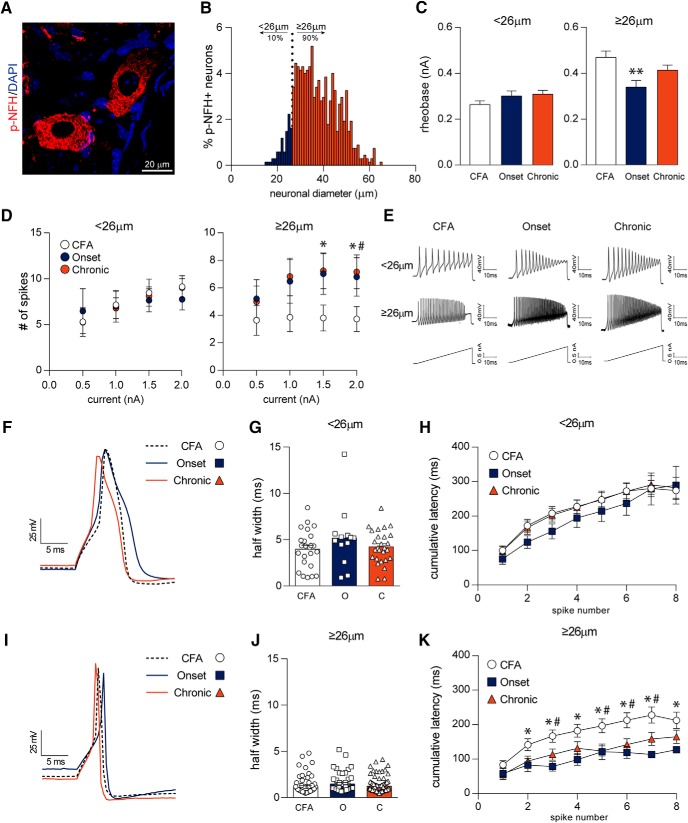Figure 6.
Larger diameter (≥26 µm) dissociated DRG neurons exhibit hyperexcitability. A, B, Labeling DRG sections from non-diseased control mice with p-NFH (also known as NF200) demonstrates that 90% of p-NFH+ cells are ≥26 µm, delineating smaller and larger cells. C, D, Dissociated DRG neurons from these animals exhibit aberrant firing properties under current ramp analysis. In particular, larger diameter (≥26 µm) EAE sensory neurons at disease onset have reduced rheobase and fire more APs with a current ramp of 1.5 and 2.0 nA than their CFA counterparts. EAE chronic DRG neurons also exhibit increased firing pattern at a current ramp of 2.0 nA but show an insignificant reduction in their rheobase. E, Sample 2.0-nA current ramp traces of dissociated DRG neurons. F–H, Half width of smaller diameter neurons (<26 µm) as well as cumulative latencies of APs remain relatively unchanged with EAE disease. I–K, Although spike width is unaffected in larger diameter neurons (≥26 µm), cumulative latencies are reduced with EAE disease indicating that APs fire quicker in succession with the onset of EAE. Other spike parameters are summarized in Table 3. C, *,#p < 0.05, Kruskal–Wallis H test. * CFA versus Onset; # CFA versus Chronic. D, **p < 0.01, one-way ANOVAs with Tukey’s post hoc analysis. K, *,#p < 0.05, two-way ANOVA with Tukey’s post hoc analysis. A, B, n = 5, 674 of 1055 cells were p-NFH+. C, D, <26 µm: CFA, n = 33; onset, n = 17; chronic, n = 27; ≥26 µm: CFA, n = 76; onset, n = 51; chronic, n = 94. G, CFA, n = 24; onset, n = 13; chronic, n = 27. H, CFA, n = 31; onset, n = 17; chronic, n = 25. J, CFA, n = 76; onset, n = 52; chronic, n = 94. K, CFA, n = 40; onset, n = 27; chronic, n = 44.

